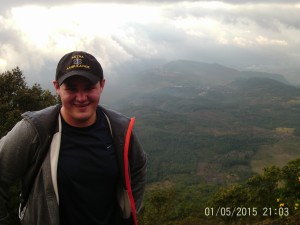by Aetna’s Tom Sopel
“So how long does it take for an ambulance to show up to these places if people need immediate attention” I asked Jorge and Dr. Vela. Hours. Not one or two, but possibly five or eight. An overburdened, underfunded EMS system meant for longer response times and some of these villages are so remote that they can only be accessed by vehicles in the dry season (summer months), otherwise the rivers grow too torrential to let cars pass. One clinic we ran was particularly deep into the jungle and hadn’t seen a clinic in over 25 years! That was the day a child saw my white, foreign face and ran away crying. It’s like he didn’t even care that I have an awesome personality…
Ok, so let’s say something happens and you can wait the few hours for an ambulance to get there. You were somehow able to stretch that golden hour of your stroke into a tarnished eight, then what? Hop in the back and start burning rubber, right? Wrong. The Guatemalan healthcare system won’t take you unless have all your paperwork signed and filled out for that particular trip, as payments need to be established BEFORE the trip, not after. That brings the interesting question: What if you’re unconscious? Well, you better hope that a loved one is around to do the paperwork for you then! Ok, stroke survived, paperwork filled out, hospital time! Wrong again.
As it turns out, treatment in Guatemala is based on a graded scale where treatment isn’t necessarily catered to acuity. You’re bumped up to progressively more and more developed health care facilities until you reach the one you need. Where first you’re dropped off at a clinic like the ones we ran or an average doctors office, and then they slowly pass you up the chain until you’re finally allowed to be transferred to a hospital. All they do in the meantime is stabilize the patient and pass them along – often a stark contrast to Hartford.

